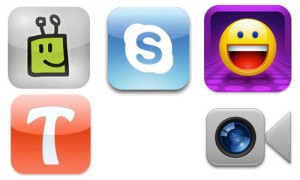 Today there are many ways for personal and business communication. But in that, most of the communications are through face-to-face, voice and text platforms. Around 55% communication is face-to-face, 38% is through a voice-only platform, the remaining 7% is what words you speak with text. In the text message, various icons and small images are used to express emotions, but nothing beats the precision of direct dialogue. That’s why random video chat is very important and popular.
Today there are many ways for personal and business communication. But in that, most of the communications are through face-to-face, voice and text platforms. Around 55% communication is face-to-face, 38% is through a voice-only platform, the remaining 7% is what words you speak with text. In the text message, various icons and small images are used to express emotions, but nothing beats the precision of direct dialogue. That’s why random video chat is very important and popular.
Video chatting via mobile phones is higher compared to video chats through websites. The major platforms for video chats on mobile are Face Time, Viber, Skype, and Hangouts. Video chat is gaining momentum owing to its real-time connectivity feature. By following the best video chat software, businesses can reduce operational costs in the area of customer support.
The future is likely to be intensified with the video chatting through the following devices:
Smart Watches:
It is rumored that the second generation of the Apple Watch will have a front camera with the capability to shoot video. Currently, the smartwatch technology supports audio calls, and it may soon include video calls.
WhatsApp:
WhatsApp is a free and popular instant messaging service. It works on cross-platforms such as Android, iPhone, BlackBerry, and Windows platforms. It is the most widely used messaging application and it has over one billion users as of February 2016. It is traditionally used for sending text messages, images and videos, but the next embodiment of WhatsApp is likely to include live video chats.
Group Video Chats:
Google Hangout, Skype and Jibe Mobile are allowing users to make video calls in the group, and other companies are planning to follow this. The ability to handle group video chats are also becoming important for businesses.
Video Chatting Can Be the Future of Medicine:
In the U.S, most of the doctors test their patients through video calling. If this practice will continue, then there will an enormous benefit for both healthcare organizations and patients.
With video chatting, there is a potential to reduce miscommunication. When 55%, 38% and 7% of communication are all brought together, the accuracy could be improved.







